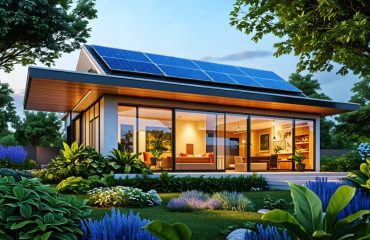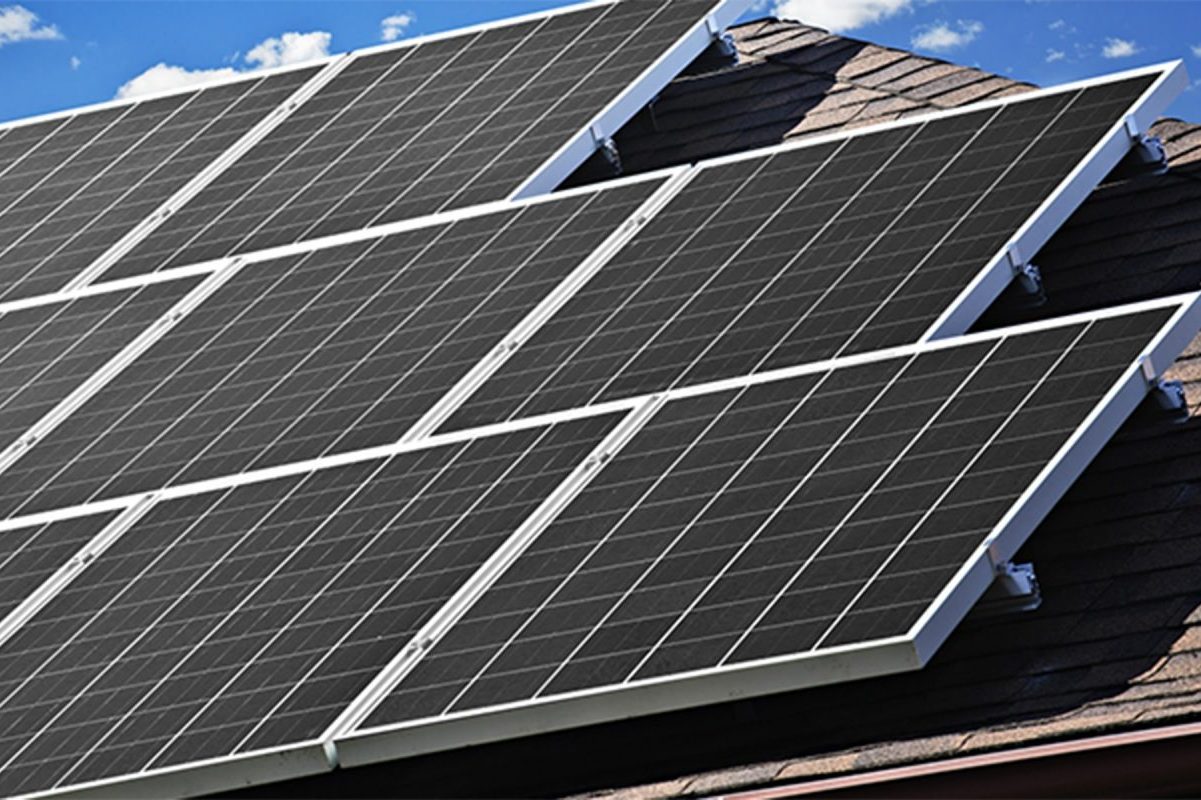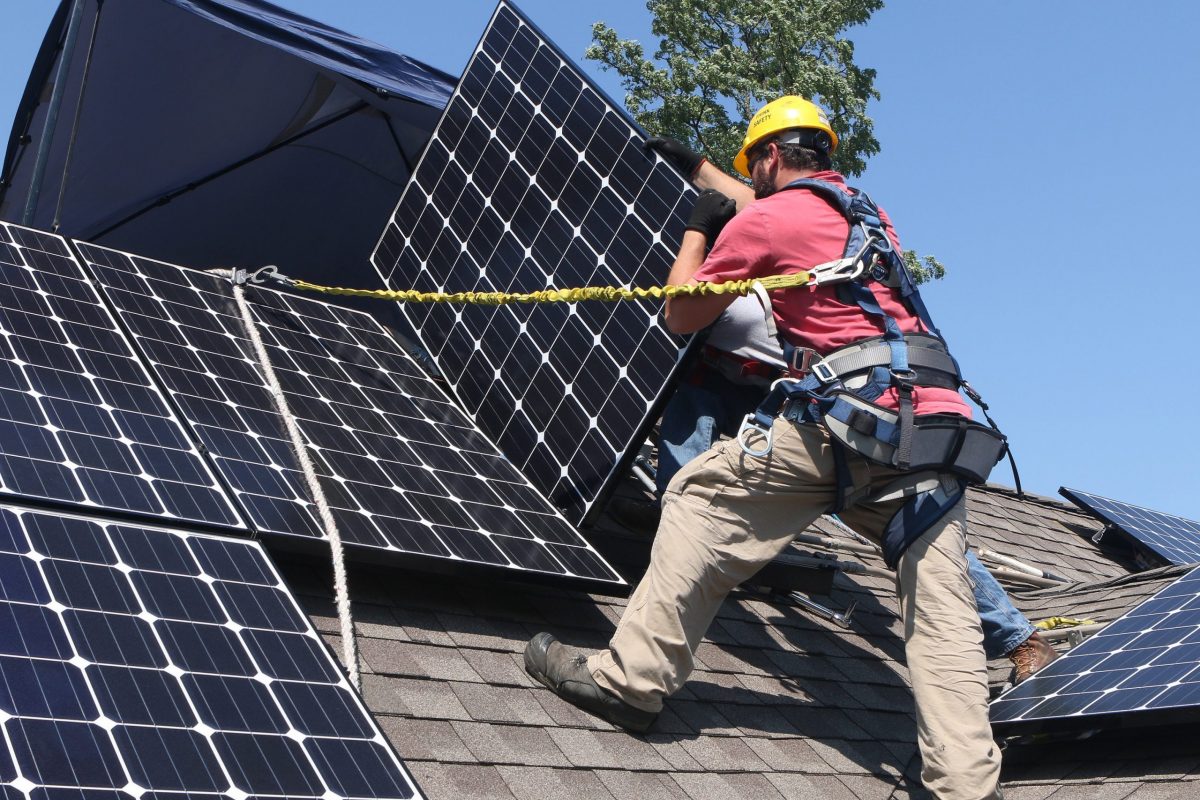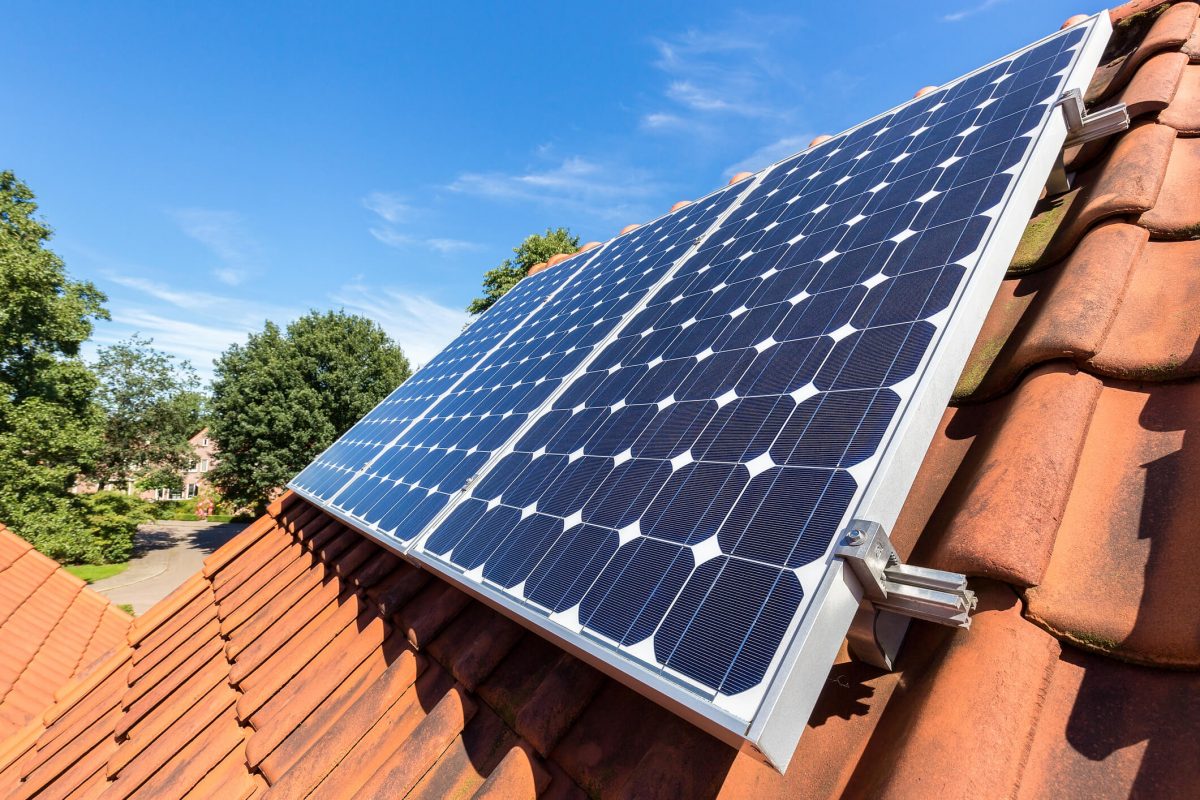Expanding your existing solar panel system can dramatically increase your home’s energy independence while maximizing your return on investment. As electricity costs continue to rise, adding panels to your current setup offers a practical solution to meet growing power demands and reduce utility bills. Whether you’re powering new smart home features or accommodating an electric vehicle, scaling up your solar capacity provides immediate benefits while futureproofing your home’s energy needs.
Before diving into expansion, evaluate your current system’s specifications, available roof space, and existing inverter capacity. Modern solar technology allows for seamless integration with your existing panels, even if they’re several years old. Most systems can be expanded by 25-50% without major modifications to your electrical infrastructure, making it a cost-effective upgrade that typically pays for itself within 5-7 years through reduced energy costs and additional solar incentives.
Is Your Solar System Ready for Expansion?
System Capacity Check
Before adding new panels to your existing solar system, it’s crucial to perform a thorough system capacity evaluation to ensure your current setup can handle the expansion. Start by checking your inverter’s capacity rating, which determines how much solar power it can process. Most residential inverters are sized with some extra capacity, but you’ll need to confirm the specific limitations of your model.
Next, examine your electrical panel’s amperage rating and available space for additional circuit breakers. A typical solar panel addition requires a dedicated circuit breaker, so ensure your panel has both physical space and sufficient amperage capacity. Many homes have 200-amp service panels, which usually accommodate additional solar capacity without issues.
Keep in mind that some older inverters might not be compatible with newer panel technologies. In such cases, you might need to consider a micro-inverter solution or power optimizer for the new panels, which can work alongside your existing setup while maintaining optimal performance.
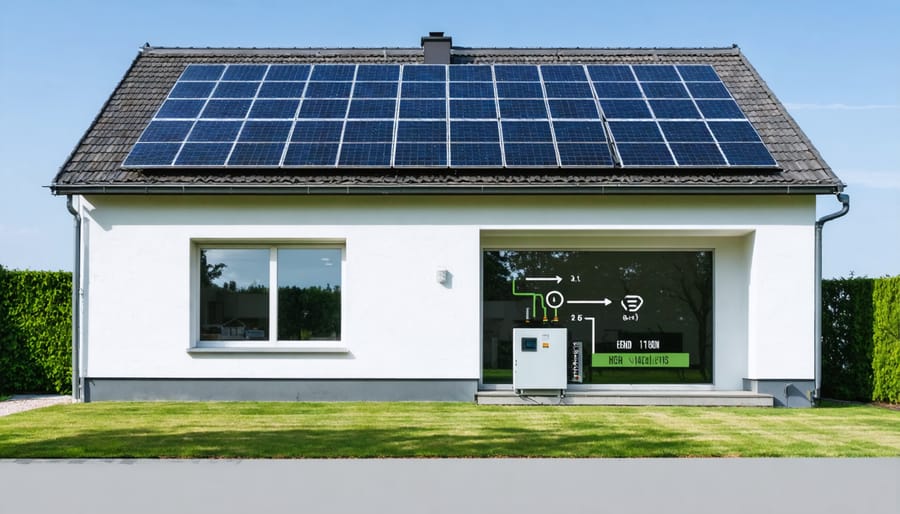
Smart Thermostat Compatibility
Modern solar systems work seamlessly with most leading smart thermostats, making smart thermostat integration a valuable addition to your existing setup. Popular models like Nest, Ecobee, and Honeywell smart thermostats are particularly well-suited for solar homes, offering features that maximize your system’s efficiency.
These smart devices can learn your energy usage patterns and adjust temperature settings based on real-time solar production. For example, they can automatically pre-cool your home when solar generation is at its peak, reducing reliance on grid power during evening hours.
Look for thermostats that offer solar monitoring capabilities through their apps, allowing you to track both energy consumption and production. Many models also integrate with home energy monitoring systems, providing detailed insights into how your HVAC usage aligns with your solar production.
For optimal performance, choose a smart thermostat that supports time-of-use programming and offers compatibility with your existing solar monitoring platform. This ensures you can make the most of your solar investment while maintaining comfortable indoor temperatures year-round.
Planning Your Solar Panel Addition
Space and Mounting Requirements
Before adding new panels to your existing solar system, it’s crucial to evaluate your available roof space and ensure your home can support the additional weight. Start by measuring your unused roof area, keeping in mind that each standard residential solar panel typically requires about 17.5 square feet of space. Remember to account for setbacks from roof edges and maintain clear paths around existing panels for maintenance access.
Your roof’s structural integrity is equally important. While modern homes are usually built to handle solar panel installations, older homes may need reinforcement. A typical solar panel adds about 2.3 pounds per square foot to your roof’s load. For a proper assessment, consult a structural engineer or certified solar installer who can evaluate your roof’s capacity to support additional panels.
Consider your roof’s orientation and shading patterns. Ideally, new panels should face the same direction as your existing array to maintain optimal energy production. Avoid areas that receive significant shade from trees, chimneys, or nearby structures, as this can impact the overall system efficiency.
Don’t forget about your mounting hardware compatibility. Using the same mounting system as your existing installation will ensure a seamless integration and maintain your roof’s weatherproofing. If your current mounting rails have extra space, you might be able to simply extend the system without installing new rails.
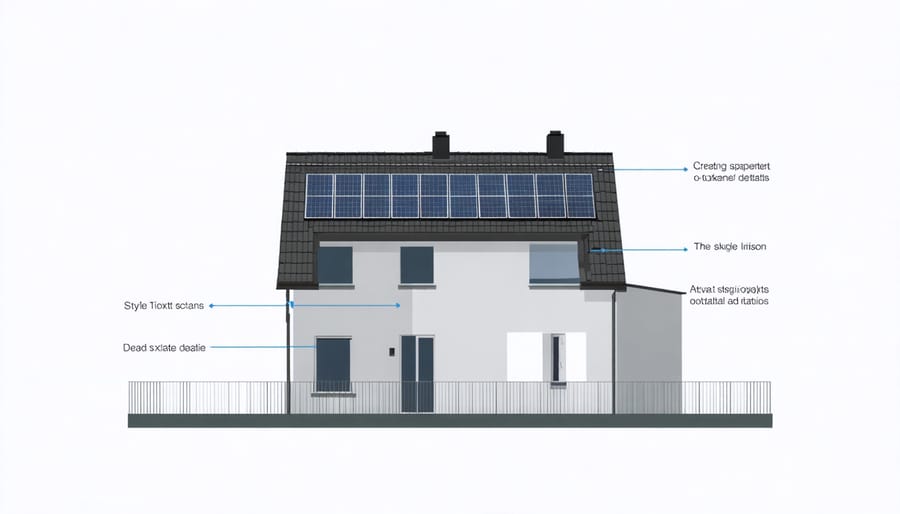
Panel Selection and Matching
When adding new panels to your existing solar system, compatibility is crucial for optimal performance. Start by identifying your current panels’ specifications, including their wattage, voltage, and physical dimensions. These details are typically found on the panel label or in your original installation documentation.
For the best results, try to match your new panels as closely as possible to your existing ones. While mixing different brands or models is technically possible, using identical or very similar panels ensures consistent power output and simplifies system maintenance. If you can’t find the exact same model, look for panels with matching electrical characteristics, particularly voltage and current specifications.
Consider these key factors when selecting new panels:
– Voltage compatibility with your existing inverter
– Physical size and mounting requirements
– Power rating (wattage) similar to existing panels
– Manufacturing tolerance ranges
– Weather resistance ratings
Work with a qualified solar installer to evaluate your current system’s capacity and recommend compatible panels. They can assess your inverter’s capabilities and ensure the new additions won’t compromise system efficiency. Remember that newer panels often have higher efficiency ratings than older models, so you might achieve better performance with fewer additional panels than you initially planned.
To maintain warranty coverage and system integrity, document all modifications and use certified installation professionals for the expansion project.
Smart Integration Benefits
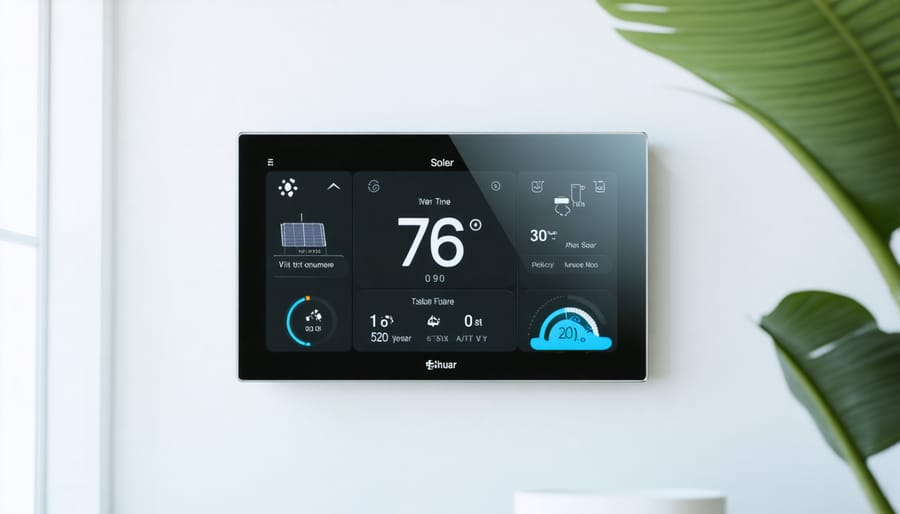
Energy Usage Optimization
Smart thermostats are revolutionizing the way homeowners optimize solar energy usage by intelligently managing your home’s temperature based on solar production patterns. These devices learn your daily routines and automatically adjust heating and cooling schedules to maximize consumption during peak solar generation hours.
When the sun is shining brightest and your panels are producing the most power, smart thermostats can pre-cool or pre-heat your home, storing energy in the form of comfort. This means you’ll rely less on grid power during evening hours when solar production decreases. Many smart thermostats also integrate with weather forecasting services, adjusting their schedules based on predicted sunny periods.
Some advanced models even connect directly to your solar monitoring system, allowing real-time adjustments based on actual panel production. For example, on particularly sunny days, the thermostat might automatically lower the temperature a degree or two to take advantage of the excess solar power, ensuring no clean energy goes to waste.
The best part? Most smart thermostats can be controlled through smartphone apps, giving you complete visibility and control over your home’s energy consumption patterns, helping you make the most of your solar investment while maintaining optimal comfort levels.
Cost Savings and ROI
Adding solar panels to your existing system, especially when combined with a smart thermostat, can significantly boost your return on investment. Homeowners typically see a 20-30% reduction in their energy bills after expanding their solar setup, with enhanced savings when smart temperature control is integrated.
The initial investment in additional panels typically pays for itself within 4-6 years through reduced utility bills and increased energy independence. Smart thermostats contribute by optimizing your home’s energy usage, potentially saving an additional $100-$200 annually. When combined with solar expansion, these savings can accelerate your ROI timeline by up to 18 months.
Many states offer tax incentives and rebates for expanding existing solar systems, which can cover up to 30% of the installation costs. Some utility companies also provide additional rebates for smart thermostat integration, further reducing your out-of-pocket expenses.
Long-term financial benefits extend beyond immediate savings. Property values typically increase by 4-6% with expanded solar capacity, and the enhanced energy management capabilities of smart thermostats make homes more attractive to future buyers. With system lifespans exceeding 25 years and minimal maintenance costs, the long-term financial advantages make solar expansion a sound investment for most homeowners.
Installation and Setup Tips
Before adding new panels to your existing solar system, start by conducting a thorough assessment of your current setup. Check your inverter’s capacity – most modern inverters can handle additional panels, but you’ll need to verify the specifications. Document your current system’s voltage and amperage to ensure compatibility with new components.
Contact your original installer if possible, as they’ll be familiar with your system and local regulations. If unavailable, seek a certified solar professional who has experience with system expansions. They can evaluate your roof’s structural capacity and identify the best placement for new panels.
Ensure your existing mounting rails can accommodate additional panels. If not, you may need compatible extension rails. Check that your electrical panel has sufficient capacity for the expanded system. Your professional installer should verify all connections are properly rated for the increased power flow.
When selecting new panels, try to match the specifications of your existing ones for optimal performance. While mixing different panels is possible, similar voltage ratings will yield the best results. Consider upgrading to micro-inverters or power optimizers if you’re using different panel types.
Remember to obtain necessary permits and update your utility agreement. Many jurisdictions require new inspections when modifying solar installations. Schedule the installation during dry weather to ensure safe working conditions and proper sealing of any new roof penetrations.
Adding solar panels to your existing system is a smart investment that can significantly boost your home’s energy independence and reduce utility bills. By following the proper steps – assessing your current system, checking compatibility, obtaining necessary permits, and working with qualified professionals – you can successfully expand your solar capacity. Remember to evaluate your energy needs, roof space, and inverter capabilities before making any decisions. Whether you’re looking to power new home additions or prepare for increased electricity demands, expanding your solar system is an achievable goal. Take the first step by contacting a certified solar installer for a professional assessment of your expansion options, and you’ll be well on your way to maximizing your home’s renewable energy potential.




